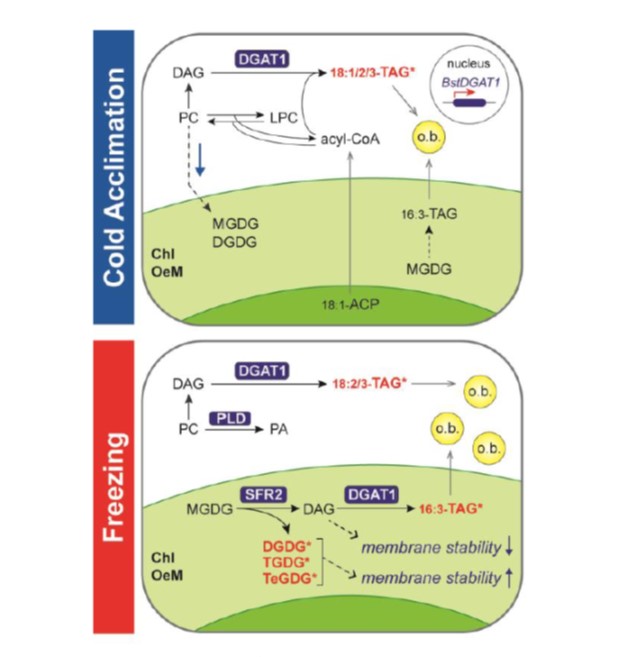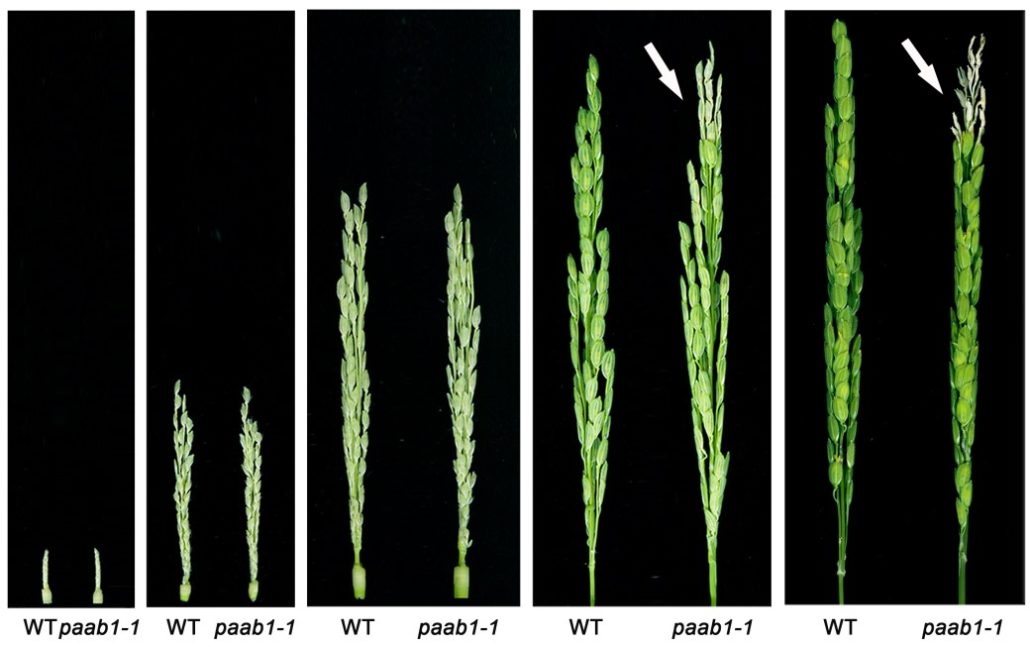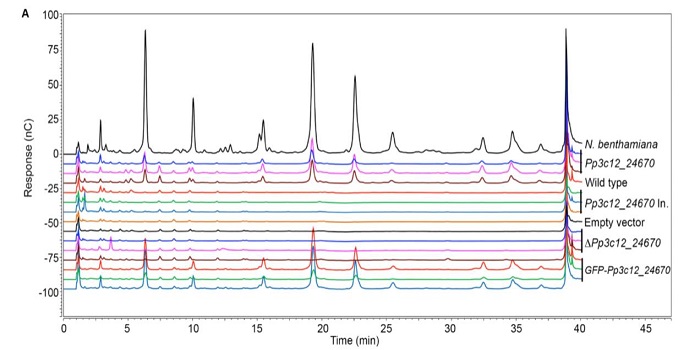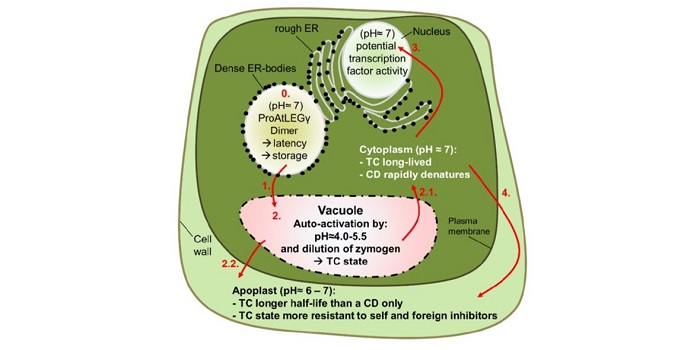
Cellulose Synthase Stoichiometry Varies among Species and Tissues
Blog, Plant Physiology, Plant Physiology: News and ViewsCellulose, the most abundant biopolymer on earth, is an important structural component of the primary and secondary cell wall of plant cells. It is also found in animals (tunicates), oomycetes, and bacteria (Kumar and Turner, 2015). Besides providing support and rigidity in living organisms, cellulose…

A Lipid Synthesis Enzyme Confers Freezing Tolerance
Blog, Plant Physiology, Plant Physiology: On The InsideDespite major advances in understanding cold signaling, cold acclimation, and freezing protection in model and crop species, and extensive studies of natural variation in freezing tolerance in Arabidopsis accessions, the question of which genes and mechanisms underlie freezing tolerance of wild species…

A Malate Transporter in Rice Panicles
Research, The Plant Cell, The Plant Cell: In a NutshellHeng et al. demonstrate a role of OsALMT7-mediated malate transport in panicle development and grain production of rice. The Plant Cell (2018). https://doi.org/10.1105/tpc.17.00998
By Yueqin Heng, Chuanyin Wu and Jianmin Wan
Background: Rice is a staple food for more than half of the world’s…

Protein Editing for Multi-Tasking
Research, The Plant Cell, The Plant Cell: In a NutshellZauner et al. investigate the mechanism of protein re-purposing. The Plant Cell (2018). https://doi.org/10.1105/tpc.17.00963.
By Florian B. Zauner, Elfriede Dall and Hans Brandstetter
Background: Plants cannot run away from herbivores, drought, or heat. To withstand adverse conditions, plants have…

A moss glycosyltransferase produces a novel cell wall arabinoglucan ($) (Plant Cell)
Plant Science Research WeeklyPlants produce a wide range of polysaccharides in their cell walls, some of which are restricted to certain species. Roberts et al. investigated a moss gene encoding an enzyme that resembles a mixed-linkage (1,3;1,4)-β-glucan (MLG) synthase. When expressed in tobacco, this enzyme produces a novel unbranched,…

Review: The role of auxin in cell wall expansion (OA)
Plant Science Research Weekly, Research BlogCell wall is the outermost boundary for a cell. For the protection of cell, it maintains its rigidity. At the same time, for providing the shape of cells, it is capable of becoming flexible. This means that the cell wall has the capacity to maintain both rigidity and flexibility based on the requirement.…

Review: Rubisco is not really so bad ($) (Plant Cell Environ)
Plant Science Research WeeklyThe carbon-fixing enzyme Rubisco (Ribulose‐1,5‐bisphosphate carboxylase/oxygenase) is much-maligned and has been described as “sluggish” and with “confused specificity”. In this new Review, Bathellier et al. argue that it is “not really so bad”. Their reasoning is that when Rubisco’s…

Crystal structure and pH dependency of peptidase & ligase activity in Arabidopsis legumain (Plant Cell)
Plant Science Research WeeklyLegumains are proteins identified first from legumes that have subsequently been identified in other organisms. They are also described as asparaginyl endopeptidases (AEPs) and vacuolar cysteine proteases or vacuolar processing enzymes. Enzymatically, legumains can express peptidase and peptide ligase…

A family of small, cyclic peptides buried in preproalbumin since the Eocene epoch (Plant Direct)
Plant Science Research WeeklySmall cyclic peptides are produced in many organisms; some are produced by ribosomes and others not. Fisher et al. explore a class of small cyclic peptides known as orbitides, which have been identified in plants of Asteroideae subfamily of the plant family Asteraceae. The fact that these are abundant…

